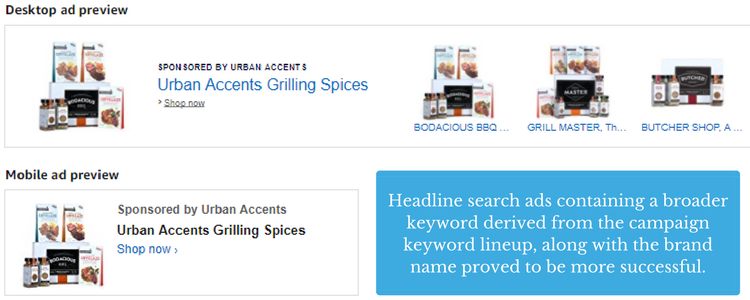There is no more vibrant time to be an Amazon seller than the fourth quarter (Q4). Between widely-celebrated holidays and end-of-the-year events, many brands experience high growth and an impressive bump in PPC-driven sales during the last three months of any year.

Let's get a little context for just how significant the growth potential is. Across the Bobsled Marketing portfolio of clients, which sell everything from beauty products to games for kids, unit sales rose by 188% in November 2016 over October. That trend only intensified through the end of the year, with December sales 385% higher than October. For one client in the food & gourmet grocery category, units ordered in December were 2,527% higher than in October!
A 324% increase in clicks between October and December 2016 also makes Q4 the most competitive time to be an Amazon seller, which means you need to have your PPC strategy in place well before the quarter's key events to maximize your growth potential.
Timing and inventory is the foundation
We like to say that the entire 90 days of Q4 deserves your attention, not just the four key sales events and several holidays. That said, the most significant opportunities for Amazon sellers are on Halloween (10/31), Thanksgiving (11/23), Black Friday (11/24), and Cyber Monday (11/27).
With these days in mind, timing becomes an incredibly important part of your Q4 PPC strategy. If you're hoping to start taking advantage of Halloween sales opportunities, for example, you can't expect to launch your campaigns a week beforehand—especially if you haven't completed your keyword research or have the campaign's structure in place already.

Managing your inventory is equally as important. If you run out of stock during Q4, but manage to refill your inventory only a few days later, the damage is likely already done. Your campaigns would have stopped running, and your sales would have taken a hit. At this point, recovering your PPC campaign’s success, in addition to your brand’s overall sales and revenue for the busy Q4 season, is a difficult, if not impossible, prospect.
Learning from Amazon's Prime Day guidelines
Amazon has turned the otherwise sleepy summer months into a massive sale opportunity via Prime Day. To help sellers get the most of this opportunity, Amazon has published some common sense guidelines, which we can easily translate into Q4 strategies as well.
Amazon says that using Sponsored Products, Headline Search, and Product Display campaigns at the same time will maximize product visibility on busy days like Prime Day. Amazon also recommends raising budgets, which we agree with, along with turning on Bid+ for Sponsored Products campaigns to help show your ads when they're most likely to convert.
Finally, Amazon brings up timing—namely, the idea that you should take advantage of increased traffic before a big holiday or event.
The three-step plan for three commonly asked questions
Step 1: How much should I increase my budget? Amazon itself suggests raising budgets by 150% to 300% in Q4 compared to Q3. At Bobsled Marketing, we’ve found that doubling your advertising budget is a good best practice with a proven track record.
Step 2: How competitive should I get with my bids? To remain competitive in the busy holiday selling season, you will have to raise your bids on relevant keywords to your products. But by how much?
We recommend that our clients increase bids on the highest converting keywords so far this year by 60% to 150%. With this level of increase, your ads will remain competitive, and will continue running consistently, to ensure you get the most return out of your advertising dollars.
Step 3: What about my creative? 2017 will be the first year that Seller Central users can compete with AMS users via creative assets, due to changes in Headline Search campaigns. You should ensure that you have well-written headlines—these will ensure that your conversion rates stay high in this highly competitive time of the year.

Above: screenshot of headline search ads
One way to guarantee compelling headlines is to avoid common ways that PPC campaigns get rejected. Stay away from price callouts, such as a percentage discount, in addition to time-sensitive copy ("Cyber Monday"). You should also avoid unsubstantiated claims and superlatives, like saying your product is the "world's best" or the "highest quality." Amazon takes grammar seriously, and so your creative should avoid both all caps and capitalizing the first letter of every word. Misspellings are a no-go as well.
Q4 and Vendor Central vs. Seller Central
You can't just switch between Vendor and Seller central at will, so your strategy for Q4 depends entirely on your current agreement with Amazon. We hope you’re already very familiar with the pros and cons of your chosen platform, because the intense Q4 period amplifies many of these points. Either way, a re-examination is worth your while.
In addition, sellers need to pay more attention to customer service during the Q4 period, which draws in more new and one-off customers. As a seller, you’re responsible for your own brand’s customer service, and the last thing you want is to have your ratings drop just as you’re increasing PPC budgets and bids.
If you’re an Amazon vendor, you can’t simply believe that Amazon will take care of managing your brand and your sales. In addition, your strategy around product pages should be different than sellers. You have the ability to add premium content, such as videos, onto your pages, but this process can be time-consuming—best to start these processes moving as quickly as possible. Same goes for your increased spectrum of advertising services through Amazon Marketing Services (AMS)—you can wield incredible power, but only if you’re prepared for the big Q4 days. Remember that any changes can take several days to receive Amazon’s OK.
One new feature that both vendors (using AMS) and sellers can use is Amazon Store pages. These pages are a powerful new way to differentiate yourself from other brands, and they should absolutely be a part of your Q4 strategy.

Above: screenshot of Amazon store pages.
Store pages allow you to add "hero" images, and even videos, to your landing pages, which showcase your product better than ever. Because buyers are looking at dozens of brands before making decisions on their holiday purchases, you need every bit of differentiation you can get. Plus, videos have a proven impact on conversion rates. We recommend that every Amazon seller create holiday-specific themes that appeal to the 4Q spirit—buyers are more likely to convert if they feel welcomed by a familiar, comfortable environment.
If you have an AMS account, you can also direct PPC traffic directly to your Store page, making it an excellent method of pulling buyers into the top of your sales funnel. Plus, we've already found that using Headline Search in conjunction with Store pages produces substantial traffic with a low Advertising Cost of Sales (ACoS).
Making the most of Q4
The quarter has already begun, and while we encourage our clients to start on their selling strategy as soon as possible, it's also not too late. If you have completed your keyword research and are controlling your inventory, now is the time to start implementing the three-step plan: increasing budgets, raising bids, and refresh your creative.
And if you don't have a strategy in place, it's also not too late to request a consultation from our Amazon experts.
.png)

